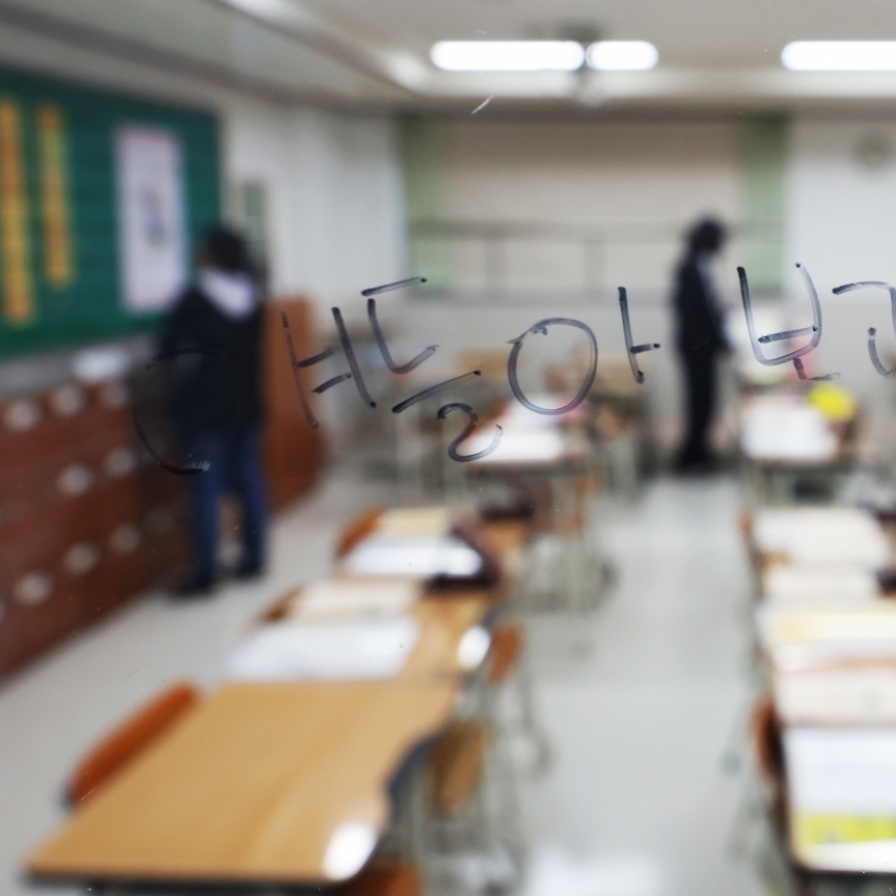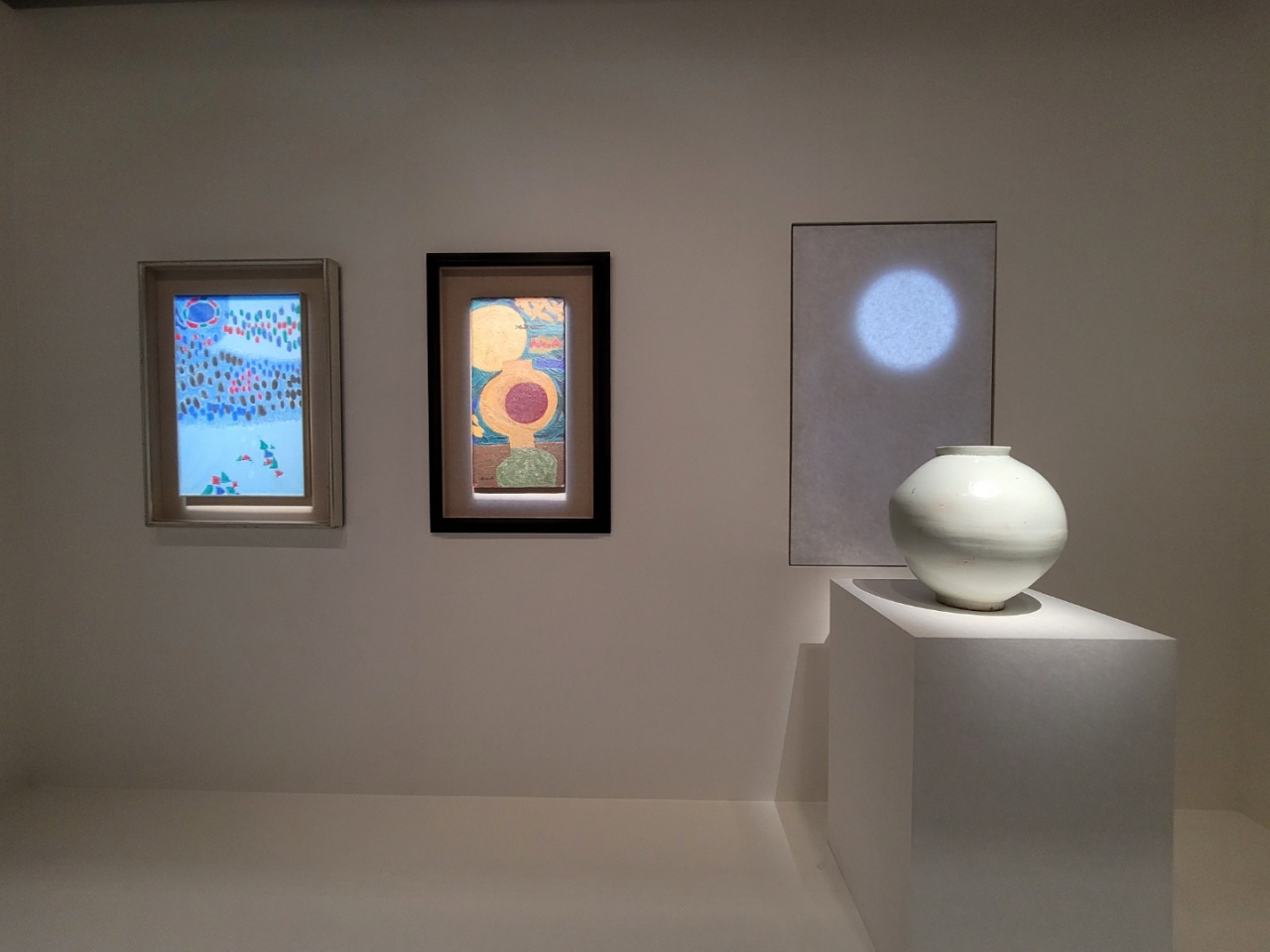
(From right) “Moon Jar” from the 18th century and Kim Whan-ki‘s “Work” and “26-I-68” are on display at the National Museum of Korea (Park Yuna/The Korea Herald)
When late Samsung Chairman Lee Kun-hee and his family donated the late tycoon’s collection last April to the country’s national museums, the art circle was surprised at the unprecedented donation of art in Korea. Included among the approximately 23,000 donated works are national treasures and rarely seen Korean artworks.
To mark the first anniversary of the donation, the two national museums -- The National Museum of Korea and The National Museum of Modern and Contemporary Art, Korea -- have selected works from the donated collection that present the identity of Korean culture for an exhibition titled “A Collector’s Invitation,” which opens to the public on Thursday.
“A Collector’s Invitation” aims to make visitors feel as if they have been personally invited to the collector’s house.
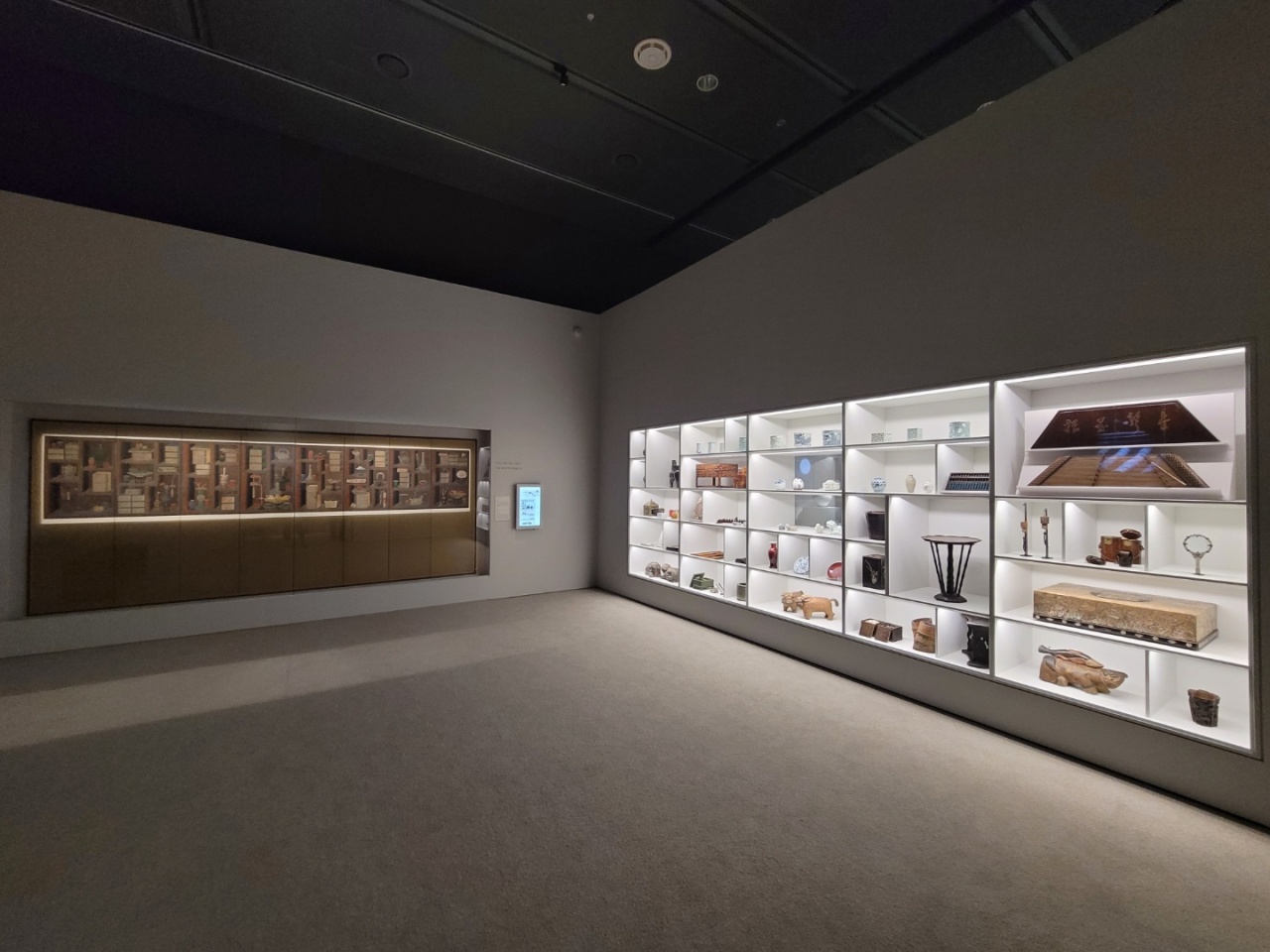
“Chaekgado, Scholar‘s Accoutrements on a Bookshelf” from the 19th century (left) and Joseon-period antiques are on display at the National Museum of Korea (Park Yuna/The Korea Herald)
“Gate,” a sculpture by pioneering Korean sculptor Kwon Jin-kyu welcomes visitors with a quote at the entrance: “This door will lead you to our house full of art collections.” One may catch the scent of tea leaves being roasted underneath a huge table that serves as a platform for exhibiting delicate blue-and-white tea pot and tea cup sets.
“We wanted to make visitors feel comfortable and enjoy the show with their senses as if they were actually invited to the collector’s house,” curator Lee Su-kyung told The Korea Herald.
“Many people wonder what kind of artworks Lee had, and expect him to have had a lot of treasures and such. In fact, he kept a lot of valuable Korean cultural artifacts that are very precious. With Lee’s collection, we want the visitors to learn about our ancestors’ wisdom and the path they had walked through,” she added.
On display are 355 artifacts, including six state-designated national treasures and 15 treasures. The famous ink painting “Clearing after Rain on Mount Inwang” by Jeong Seon from the 18th century is on display. The Joseon-era work was shown last year at the National Museum of Korea. Some ink paintings, including “Clearing after Rain on Mount Inwang,” will be replaced regularly for preservation reasons as most ink paintings must have limited exposure to light, according to the museum.
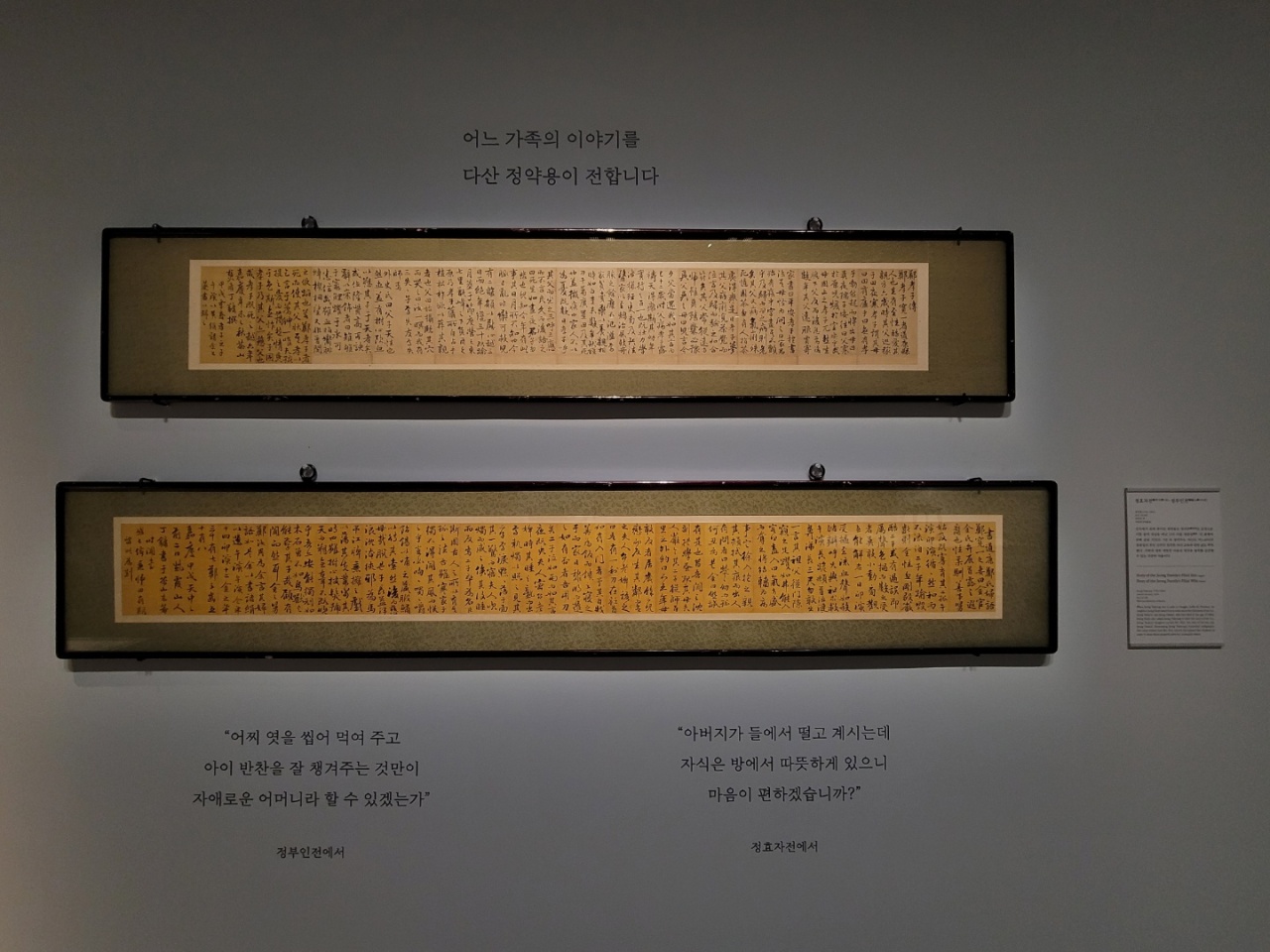
“Story of the Jeong Family’s Filial Son” (top) and “Story of the Jeong Family’s Filial Wife” by Jeong Yak-yong are on display at the National Museum of Korea (Park Yuna/The Korea Herald)
The highlights of the exhibition are “Story of the Jeong Family’s Filial Son” and “Story of the Jeong Family’s Filial Wife” – ink writings on silk by leading Silhak scholar Jeong Yak-yong (1762-1836) from the Joseon era. While in exile in Gangjin, South Jeolla Province for 18 years for his involvement in the Catholic Persecution of 1801, the scholar of Silhak, or practical learning, interacted with neighbors and wrote about the filial piety of his neighbor Jeong Yeo-ju’s son Jeong Gwan-il and his daughter-in-law Ms. Kim.
“There were not many literary scholars who interacted with residents of the areas to where they were exiled. The ink writings show Jeong’s humane personality,” an official from the museum said during a press tour on Wednesday.
Claude Monet’s “The Water-Lily Pond” was unveiled for the first time at the exhibition. Donated to the MMCA, the painting is estimated to have been painted between 1917 and 1920 by the renowned French Impressionist painter. Monet created more than 250 paintings of water lilies in the garden he cultivated in Giverny, a village outside of Paris. The painting is accompanied by a digital image that creates a garden-like atmosphere of the collector’s house.
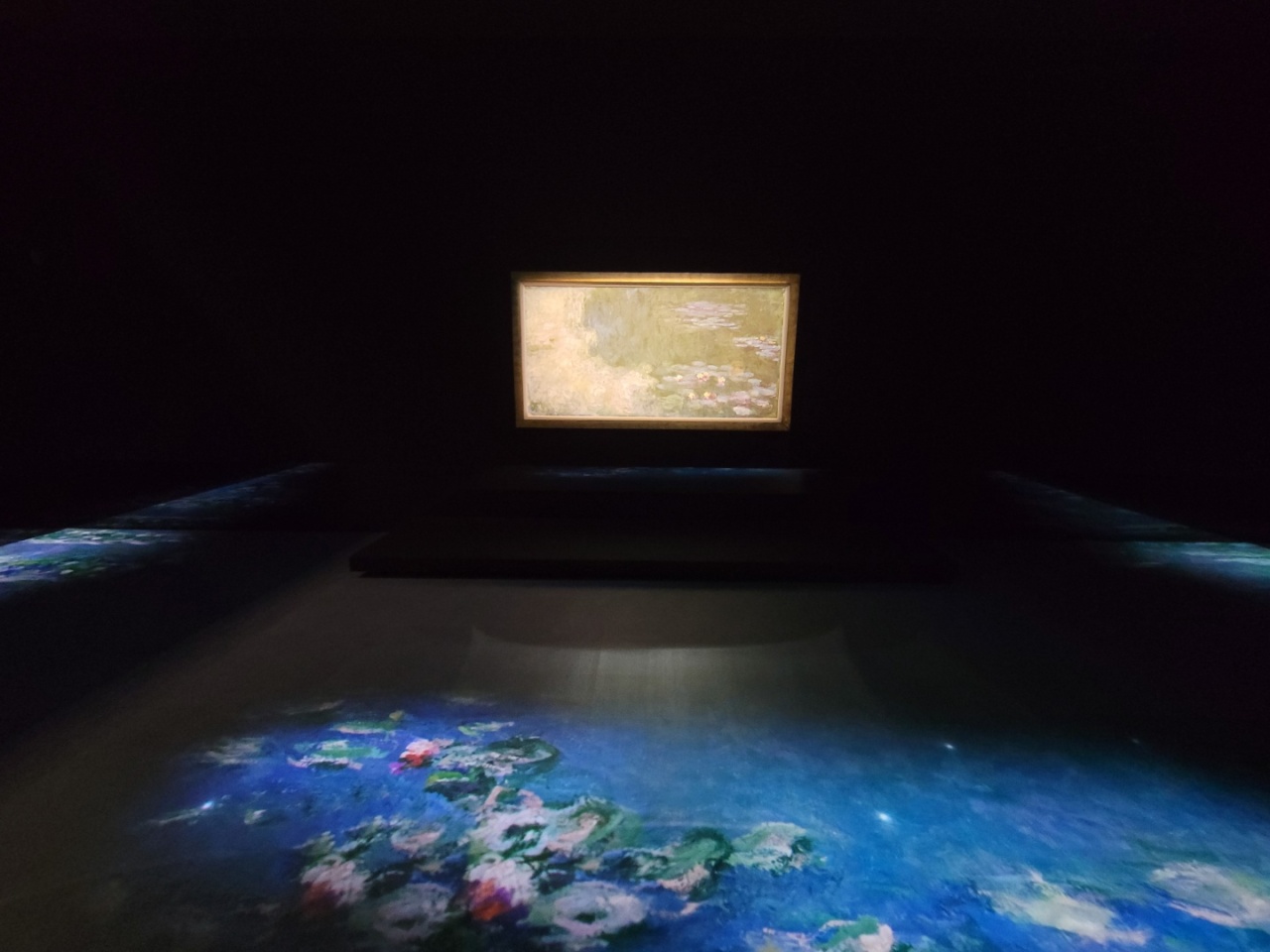
“The Water-Lily Pond“ by Claude Monet is on display at the National Museum of Korea (Park Yuna/The Korea Herald)
A number of Joseon-era furniture from the 18th and 19th centuries that were used at royal palaces are part of the exhibition. Also on display are paintings from renowned Korean painters Kim Whan-ki, Park Soo-keun, Lee Jung-seop, Chang Uc-chin and Cheon Kyung-ja. A white porcelain bottle painted in an underglaze of cobalt blue, “Faceted Bottle with Bamboo” from the 18th century shows the excellence of Joseon porcelain. The bottle has a luminous white body and clear and transparent ceramic glaze, along with a delicate illustration of bamboo.
“Collecting and preserving cultural heritage is vital for the future of human culture. It is our obligation required of the times,” reads a quote from Lee displayed near the exit. It was taken from the opening ceremony speech of the Leeum Museum of Art in October 2004.
"A Collector’s Invitation” will run through Aug. 28 at the National Museum of Korea. Online reservations are required and can be made at Interpark. A maximum of 100 people will be admitted to each session, with 30 slots set aside for on-site ticket buyers. A total of 15 to 21 sessions will be available every day.
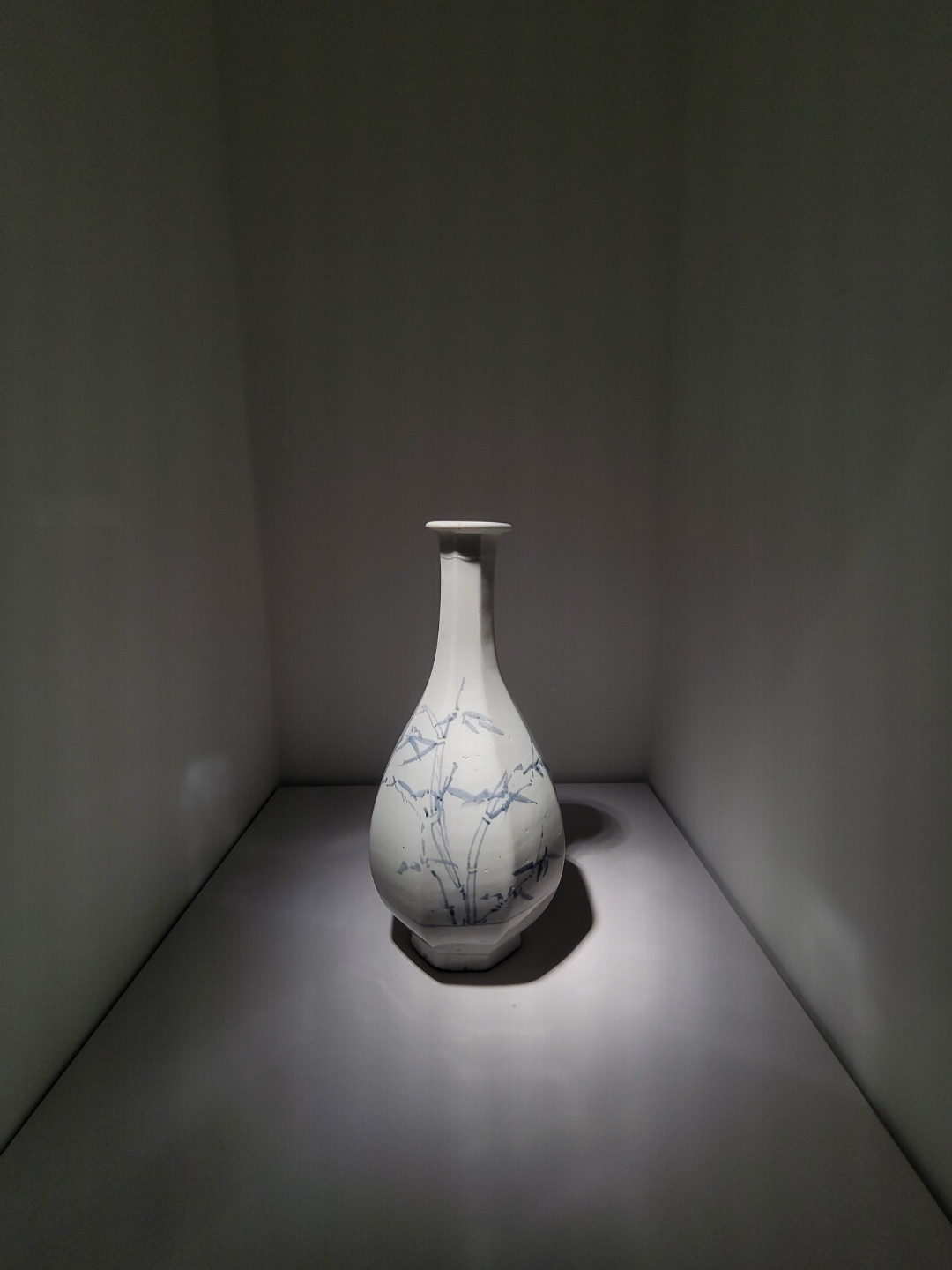
“Faceted Bottle with Bamboo” from the 18th century is on display at the National Museum of Korea (Park Yuna/The Korea Herald)
MMCA is planning another exhibition that features modern Korean art from Lee Kun-hee’s collection in August at the Seoul venue. This will be followed by an exhibition at the Gwacheon venue in Gyeonggi Province that will present some 120 artworks by international artists from Lee’s collection, according to MMCA.
“Lee Kun-hee’s collection has attracted many people to the museums, including those who had never visited a museum before. I think it is the power of art donation to get people more interested in our own cultural heritage,” curator Lee said.
By Park Yuna (
yunapark@heraldcorp.com)





